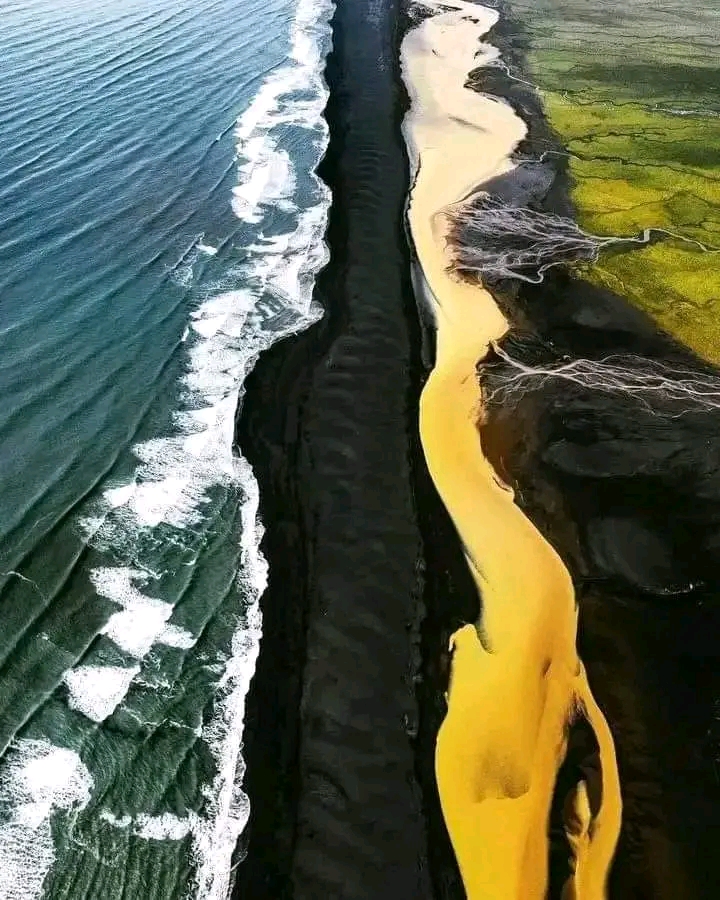Vatnajökull National Park, located in Iceland, is a breathtaking destination that showcases the incredible diversity of the country’s natural landscapes. This vast protected area, covering nearly 14% of Iceland’s landmass, is home to a remarkable convergence of colors that captivates visitors from around the world.
One of the most striking features of Vatnajökull National Park is the contrast between the green fields, yellow river, black beach, and blue sea. The Thjórsá river, known for its vivid yellow hue caused by sulfur-rich geothermal activity from nearby volcanic regions, flows alongside black sand beaches.
These black sands are a result of volcanic activity and create a stark contrast against the blue waters of the Atlantic Ocean. The lush green fields surrounding the area add to the visual feast, creating a stunning palette of colors that seems almost unreal.
The park’s diverse landscape is shaped by the dynamic interplay between fire and ice. Vatnajökull, Europe’s largest glacier by volume, covers a significant portion of the park and is a testament to the power of glacial forces. The glacier’s outlet glaciers, looming ice formations, and mighty ice caps are a popular draw for visitors seeking outdoor adventures like snowmobiling tours, glacier hikes, and ice climbing.
In addition to the glacier, Vatnajökull National Park is home to a variety of other geological features, including volcanic peaks, bubbling geothermal areas, vast lava fields, deep canyons, roaring rivers, and expansive valleys. This diversity of landscapes makes the park a true wonder of nature and a must-visit destination for anyone exploring Iceland.
Vatnajökull National Park was established in 2008 and encompasses the previously existing national parks of Skaftafell and Jökulsárgljúfur. In 2019, the park was inscribed as a UNESCO World Heritage Site, recognizing its outstanding universal value and the need to protect this unique and fragile ecosystem.
As climate change continues to impact glaciers worldwide, the preservation of Vatnajökull National Park becomes increasingly important, ensuring that future generations can witness the stunning convergence of colors that makes this place so special.

